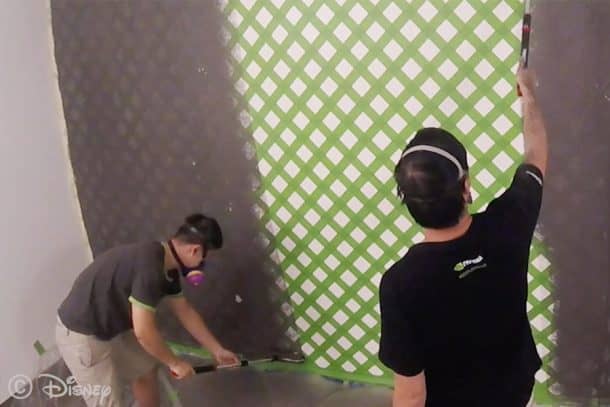A new paint developed for walls will give them the ability to track your movements and your use of electronics. The walls are getting this major upgrade thanks to an electrode-laden coating which can turn them into interactive surfaces. The concept was given by researchers at the Carnegie Mellon University (CMU) and Disney Research. They saw the black spaces as a waste of area and started wondering what can be done to equip the walls with the ability to do things like sense human touch, pick up gestures and monitor the use of appliances within a space.

Using some cheap material and tools, they were finally able to achieve their goal. They started by pasting painter’s tape across the wall in a criss-cross pattern. Then they applied two layers of the conductive paint over the top and formed a diamond-shaped grid of electrodes on the surface. The tape was removed later on and electrodes were connected to each other. The wall was then finished with a coat of standard latex paint for protection, aesthetics and was then attached to a custom sensor board. The testing showed that the diamond grid was most effective as an electrode pattern.
The wall can be put to use in two different ways. First, as a capacitive touchpad, like in a phone. This implies that whenever someone touches the wall their fingers and hands distort the wall’s electrostatic field at the point of contact. A virtual switch for a light or a thermostat could also be placed anywhere the user wants it placed. If the user is close to the wall, the system can estimate their movements and recognize the gestures as input controls.
The other application is a huge electromagnetic sensor. It is used in such a way that electrode wall acts as a passive antenna to pick up the electromagnetic noise from the nearby applications in the room. The system has the capacity to identify which devices are being used and where they are present in the room. The system will also be able to track a person who is wearing a device with an electromagnetic signature. Chris Harrison, assistant professor in CMU’s Human-Computer Interaction Institute said, “Walls are usually the largest surface area in a room, yet we don’t make much use of them other than to separate spaces, and perhaps hold up pictures and shelves. As the internet of things and ubiquitous computing become reality, it is tempting to think that walls can become active parts of our living and work environments.”


